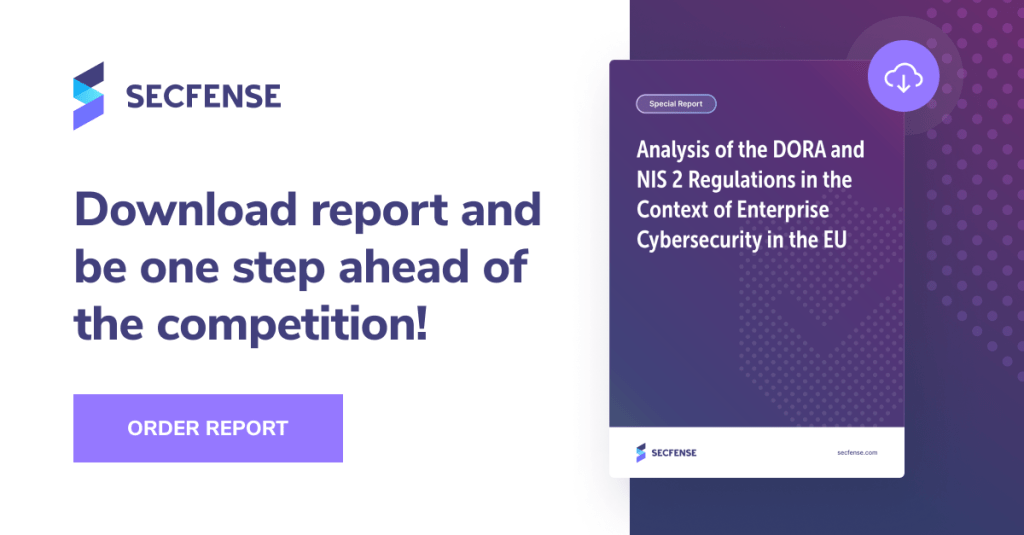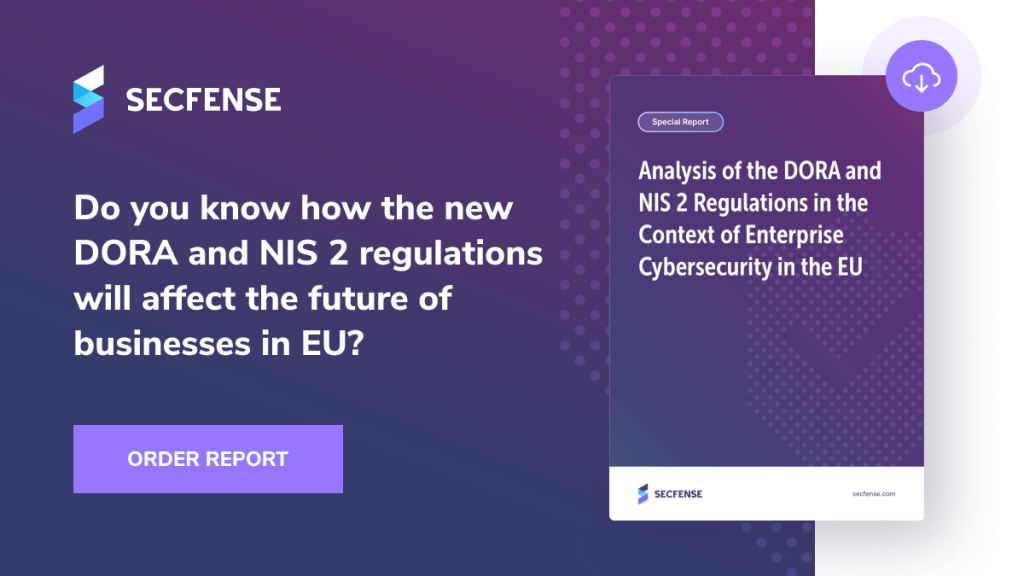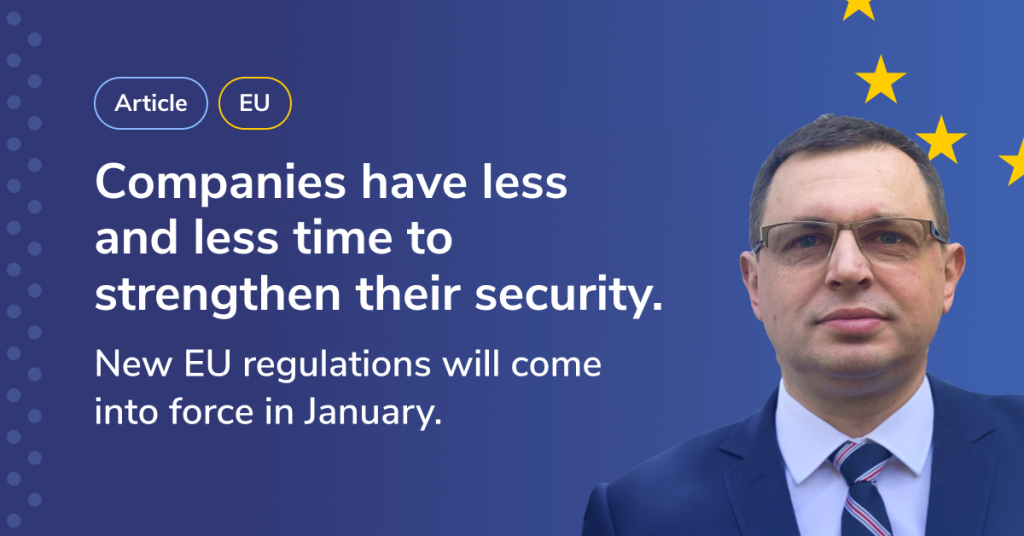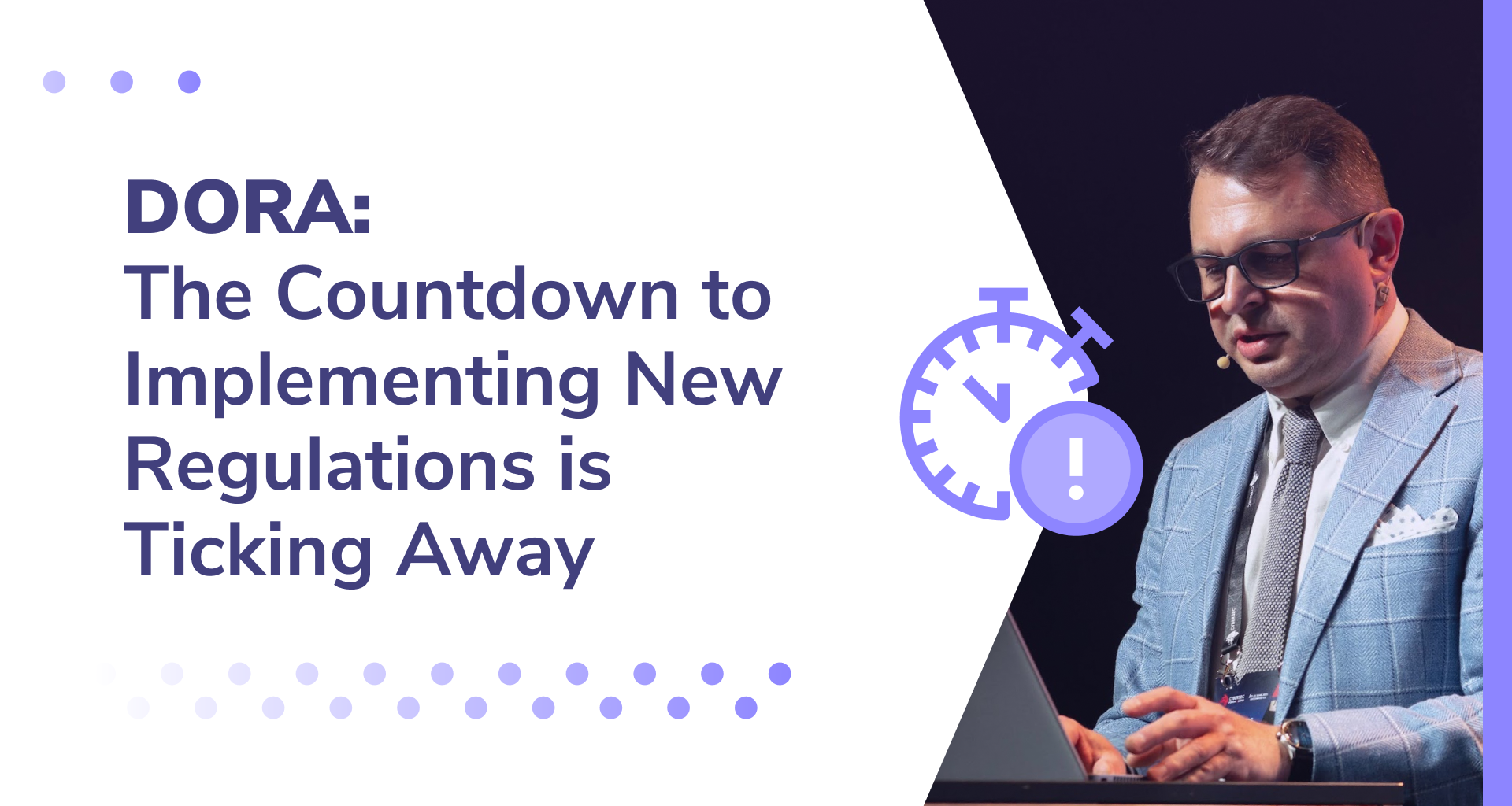Financial entities will comply with DORA requirements by early 2025.
The buzz around the new Digital Operational Resilience Act (DORA) regulation has been persistent in the financial industry. Unfortunately, many financial institutions have yet to take the necessary steps mandated by the EU. With the deadline looming, time is of the essence. However, companies can still meet the January 2025 deadline with proper organization and the right technological support.

Financial institutions should not wait any longer. It’s high time to implement DORA.
The Impact of DORA and NIS2 (Network and Information Security) Directive on the Financial Sector’s Cybersecurity
It’s crucial for financial institutions to act now to implement the Digital Operational Resilience Act. But what exactly does DORA entail? Primarily, it targets entities in the financial sector, including banks, credit institutions, investment firms, payment companies, insurance companies, and their technology providers.
DORA’s main goal is to enhance the cybersecurity level across the industry. It focuses on protecting against cyber attacks and restoring operations post-security incidents. Key requirements include developing a cybersecurity policy, implementing safeguards like encryption and access control, managing ICT-related incidents, and preparing for cyber-attacks or other security breaches.
What Should Financial Institutions Do Now?
Firstly, institutions need to identify missing elements in their cyber defense. This involves establishing teams for procedure and policy development, selecting necessary solutions, and collaborating with suppliers.

Special Report: Analyzing DORA and NIS 2 Regulations in the EU Business Cybersecurity Context
MFA – A Crucial Technology to Implement
While procedural aspects are straightforward, technology implementation demands collaboration and time. Digital Operational Resilience Act (DORA) doesn’t specify solutions except for one critical area: strong authentication mechanisms (MFA). This is a non-negotiable requirement, as reinforced by the Financial Supervisory Commission’s recommendations in October 2022.
MFA, or multi-component strong authentication, is an advanced user identity verification method. It requires at least two independent, hard-to-fake verification steps, involving something the user knows, owns, or is (like biometrics).
Why MFA Matters
MFA is crucial because traditional login-password systems are no match for cybercriminals. The world is moving towards passwordless authentication, and MFA is a step in that direction.
DORA and NIS2: Innovations in Digital Resilience
An Action Plan for Financial Institutions
Every DORA-covered entity must implement MFA. This can be done quickly and efficiently in time for the January 2025 deadline.
MFA implementation can be complex, but there are market tools like Secfense’s User Access Security Broker that simplify this process. This solution enables rapid MFA deployment on any application without code modification.

Advice for Financial Institutions
Start exploring the market for suitable solutions, test convincing options, and begin implementations.
The Urgency for Companies to Strengthen Security
An Offer Not To Be Missed
Secfense offers a fast-track User Access Security Broker valuation, testing, and implementation for DORA-compliant institutions.
To start complying with Digital Operational Resilience Act (DORA) and leverage the User Access Security Broker, get in touch with us https://secfense.com/contact/
Financial institutions can still successfully implement DORA requirements despite time constraints by choosing the right technologies and partners. Starting preparations now greatly increases the chances of enhancing security effectively.
